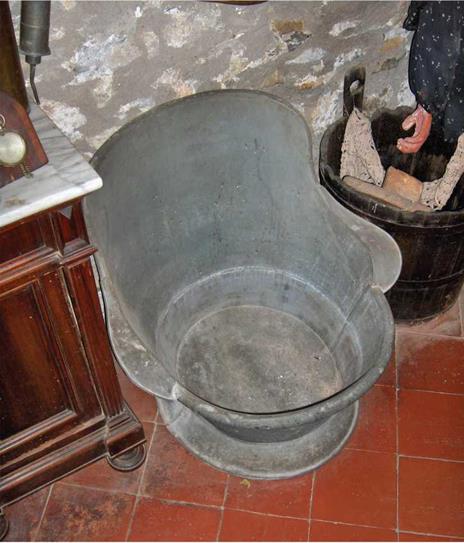Bathing for the middle class during this time usually involved a portable bathtub placed in the kitchen (see Figure 1.2)—typically the warmest room in the house with a nearby heat source for water. The fireplace used to cook the family meals also heated water for the bath. Eventually fireplaces were built with a water reservoir, making hot water more accessible. Once the bathtub was filled, it usually served the entire family, with the dirtiest family member going last. These tubs were also used for other purposes such as laundry.
Bathing in private was very limited at this time. Wealthy households, who generally used servants to carry water for the bath and dispose of it afterward, had the luxury of locating bathtubs in the privacy of their bedroom. Over time, bathtubs changed in size, shape, and materials. The earliest tubs were basically wooden barrels and then became wooden boxes lined with metal. Later tubs were made of all metal, porcelain crockery, and cast iron with porcelain enamel. More elaborate bathtubs in the bedroom incorporated a hinged cover that helped keep the warmth in the tub.
 |
 |
For families who did not have the luxury of a bathtub in the home, or if someone wanted to freshen up between infrequent baths, a bowl was used for a sponge bath that could take place in the privacy of the bedroom. The idea of incorporating a bathtub of any type into the home evolved very slowly. Even in seventeenth – and eighteenth-century Europe, these facilities were only present in homes of royalty and the very wealthy.



